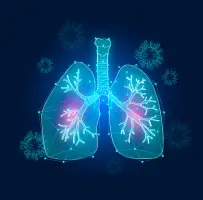Endobronchial Ultrasound (EBUS)

EBUS (Endobronchial Ultrasonography) is a medical imaging technique that allows visualisation of the lungs and surrounding lymph nodes during bronchoscopy. This method is used in the diagnosis and staging of diseases such as lung cancer.
EBUS is performed using an ultrasound probe integrated into the bronchoscopy device. The bronchoscopy is guided through the mouth or nose into the respiratory system via a thin flexible fibreoptic tube. This tube is used to visualise the airways and lungs.
During EBUS, the ultrasound probe is placed at the tip of the bronchoscope and travels through the bronchial walls and into the lungs. Ultrasonic waves at the tip of the probe are used to visualise structures such as the bronchial walls and surrounding lymph nodes. In this way, detailed information about areas such as lung lesions and lymph nodes can be obtained.
EBUS allows the examination of the lung and surrounding lymph nodes in a non-invasive manner, i.e. without surgical intervention. Therefore, when used for diagnostic purposes, it is considered a less risky option compared to other invasive methods.